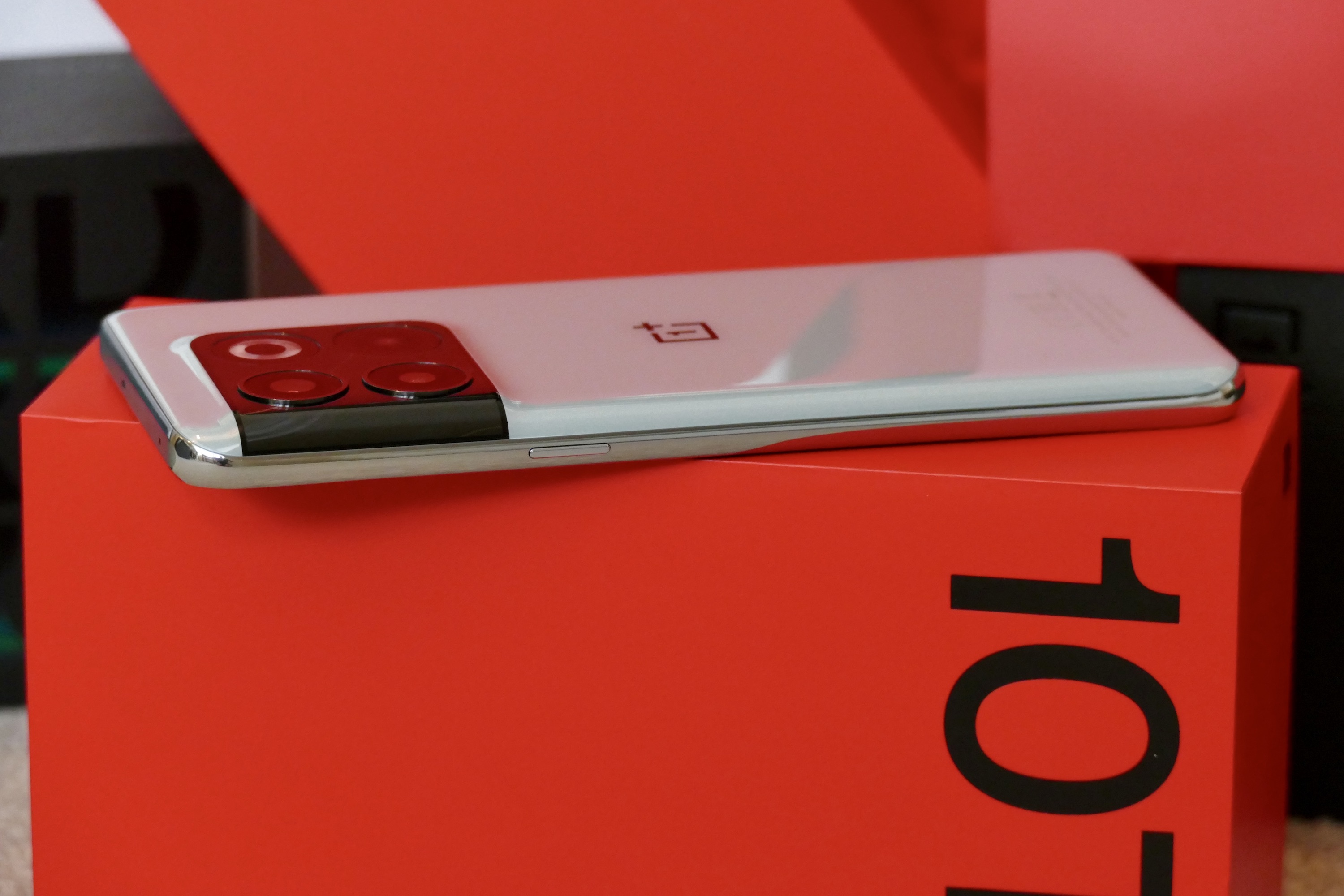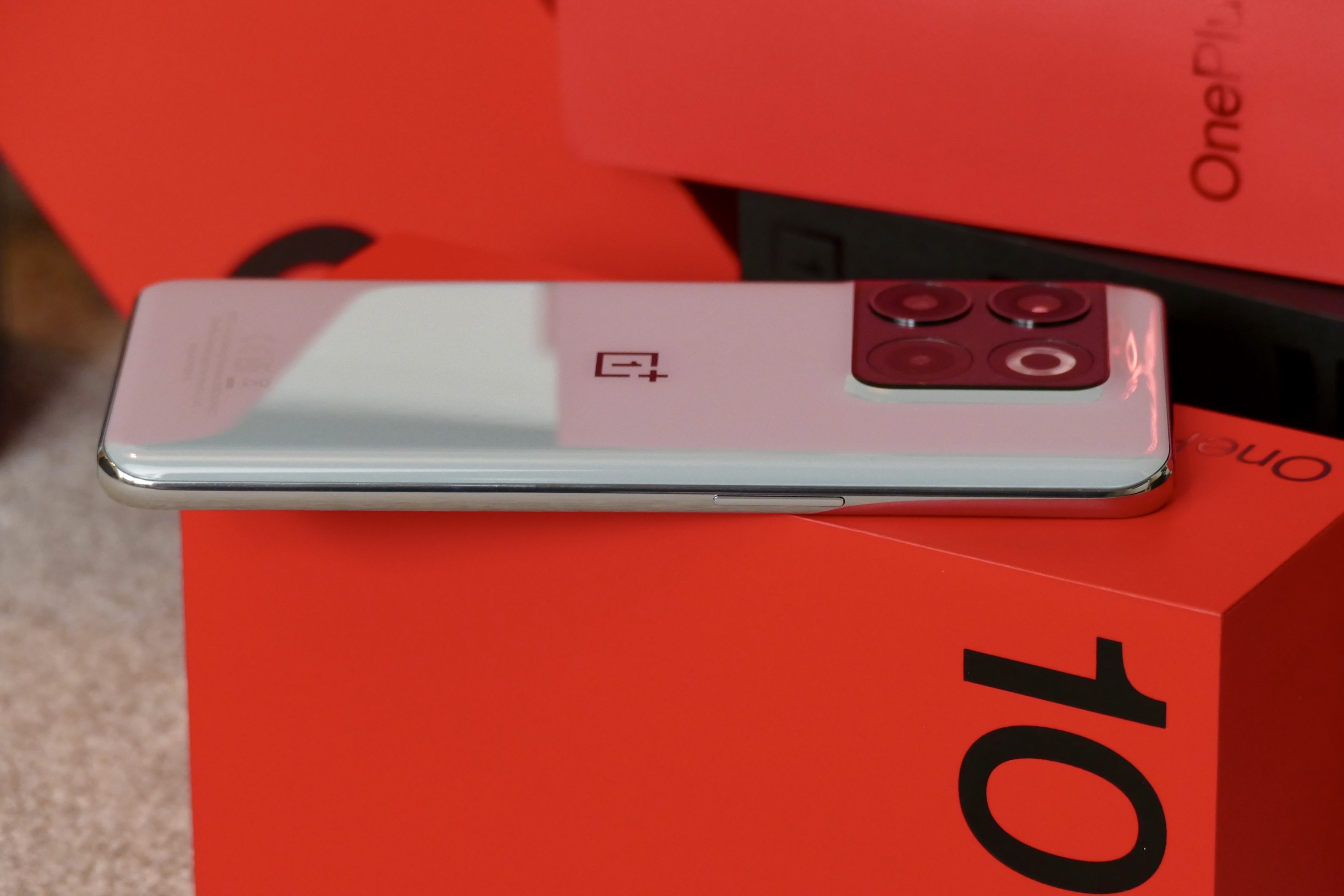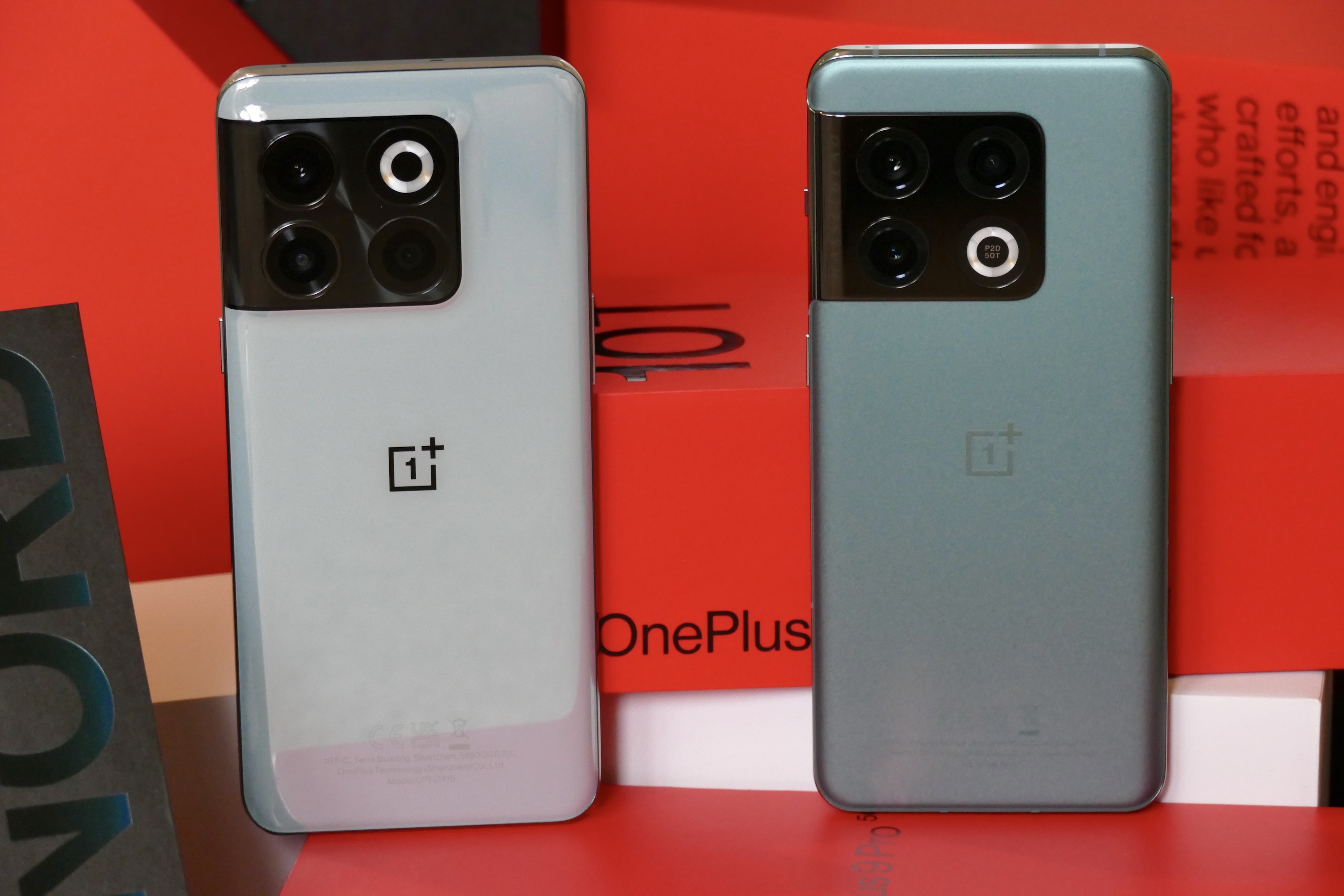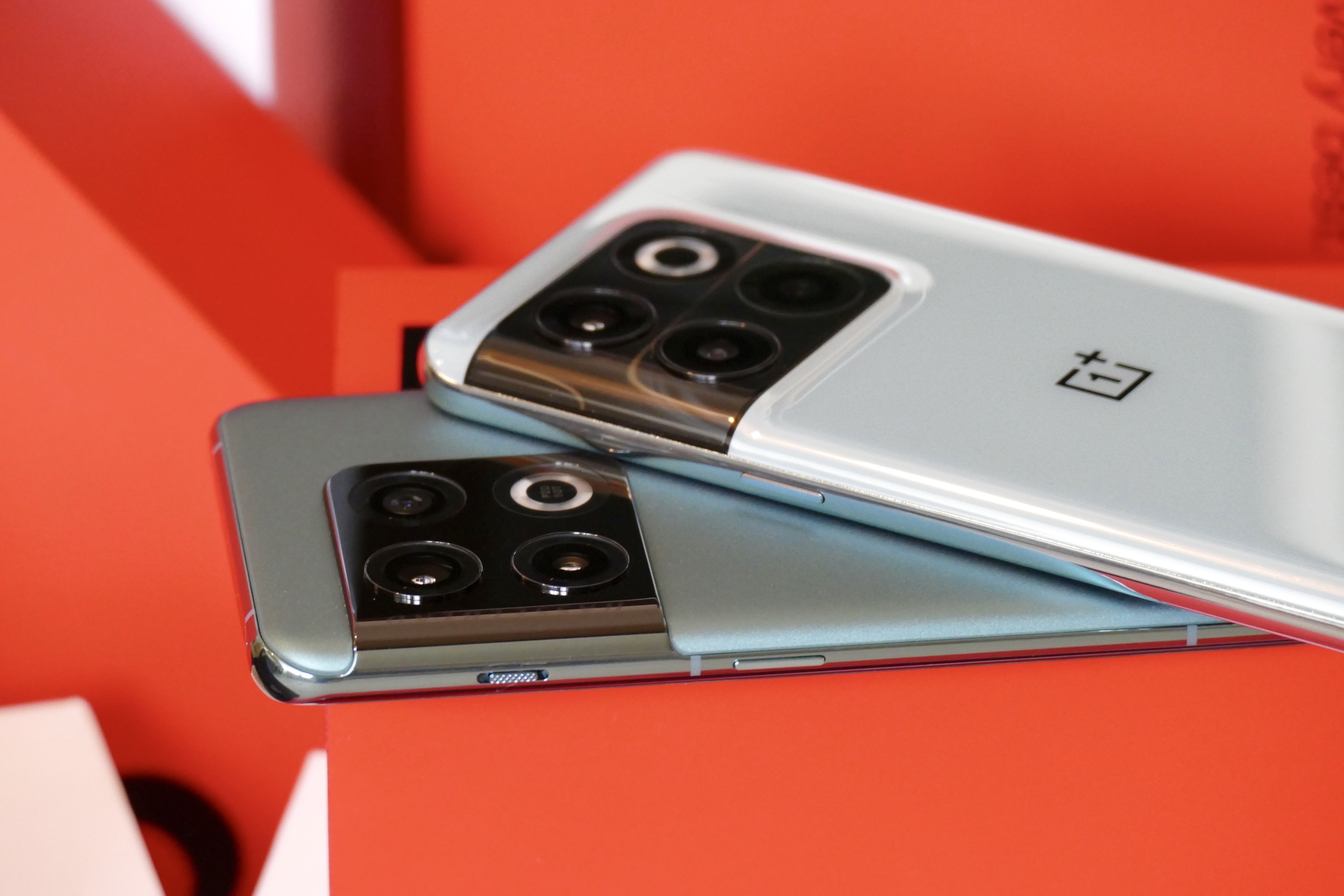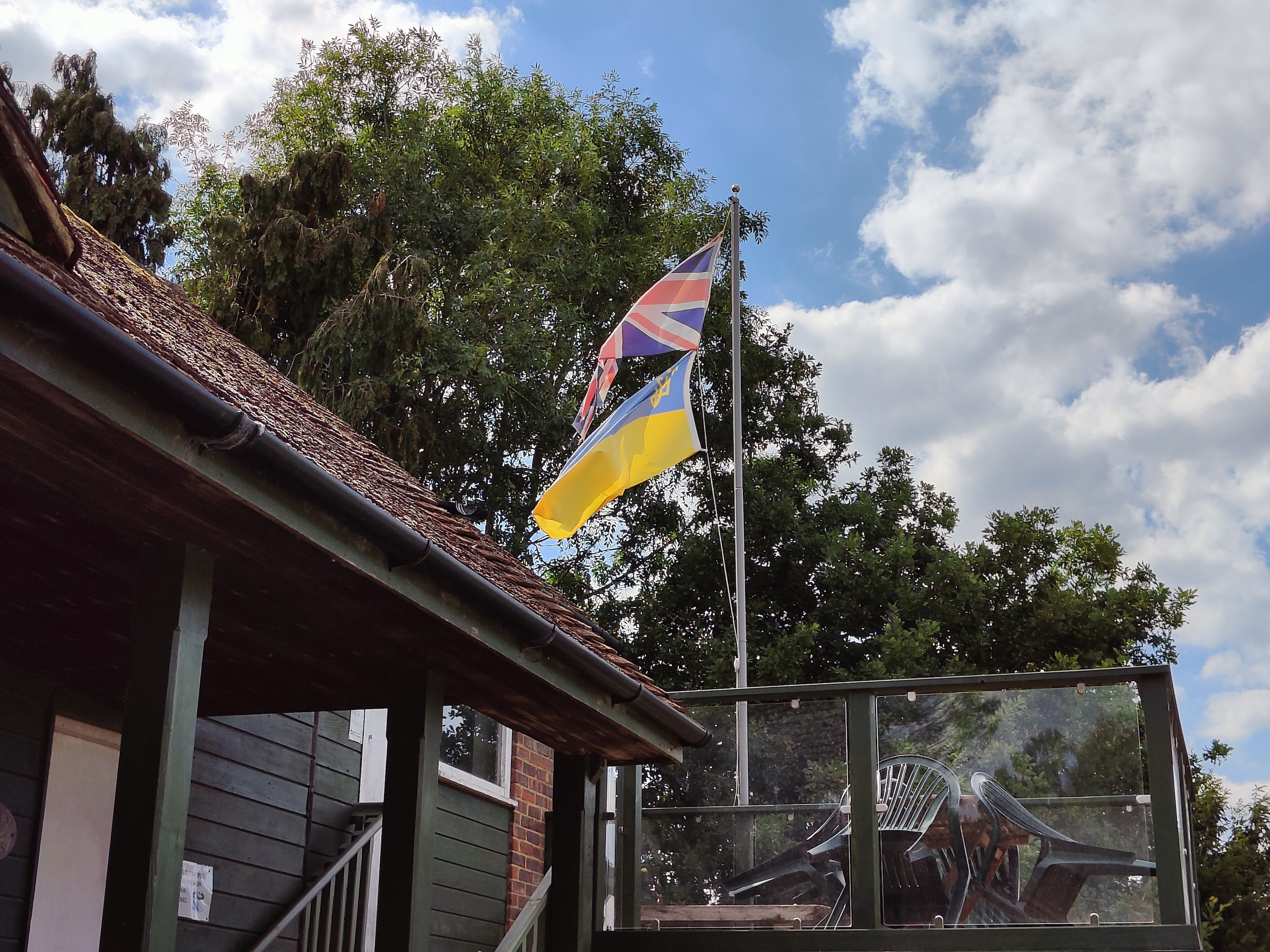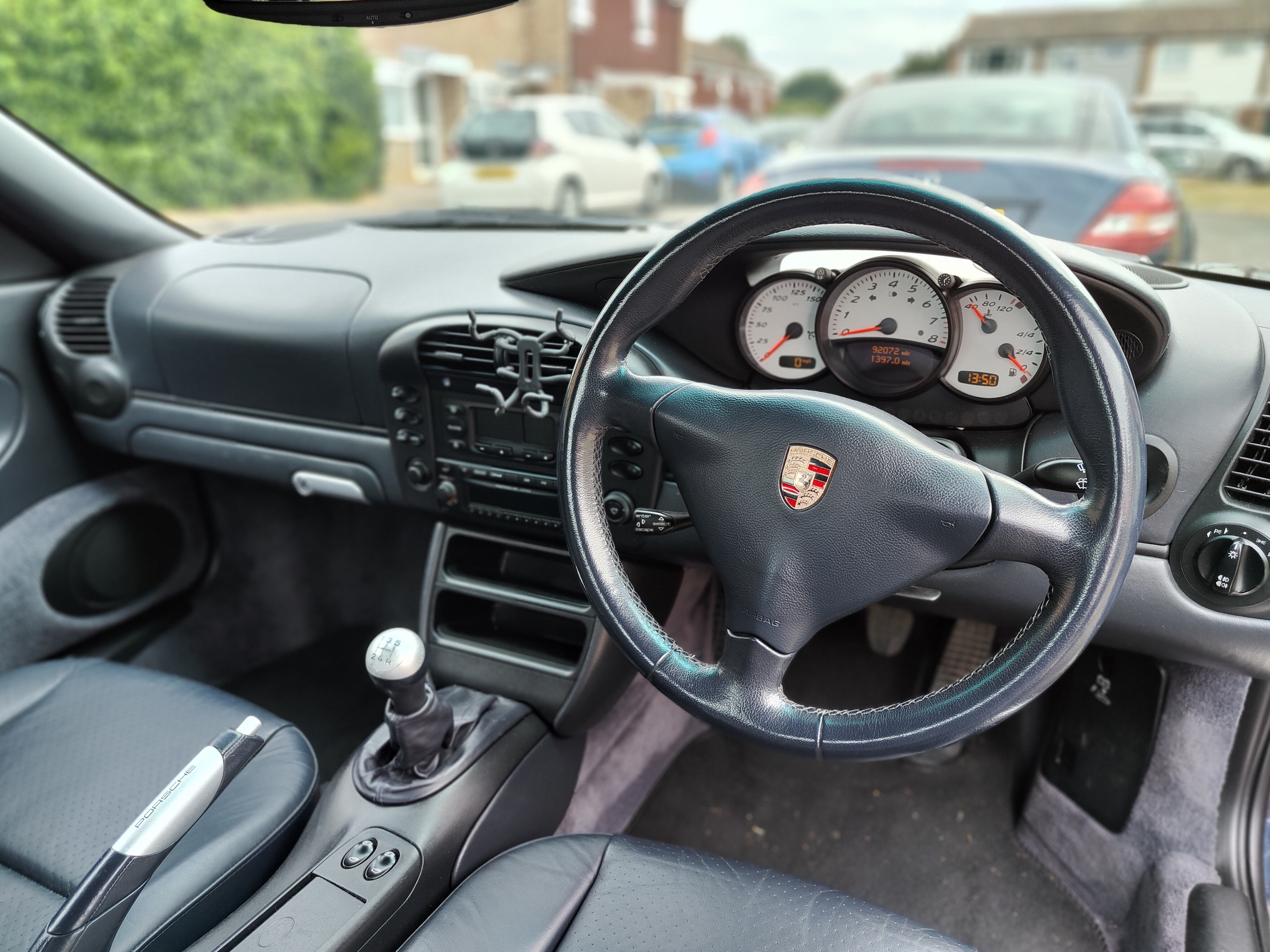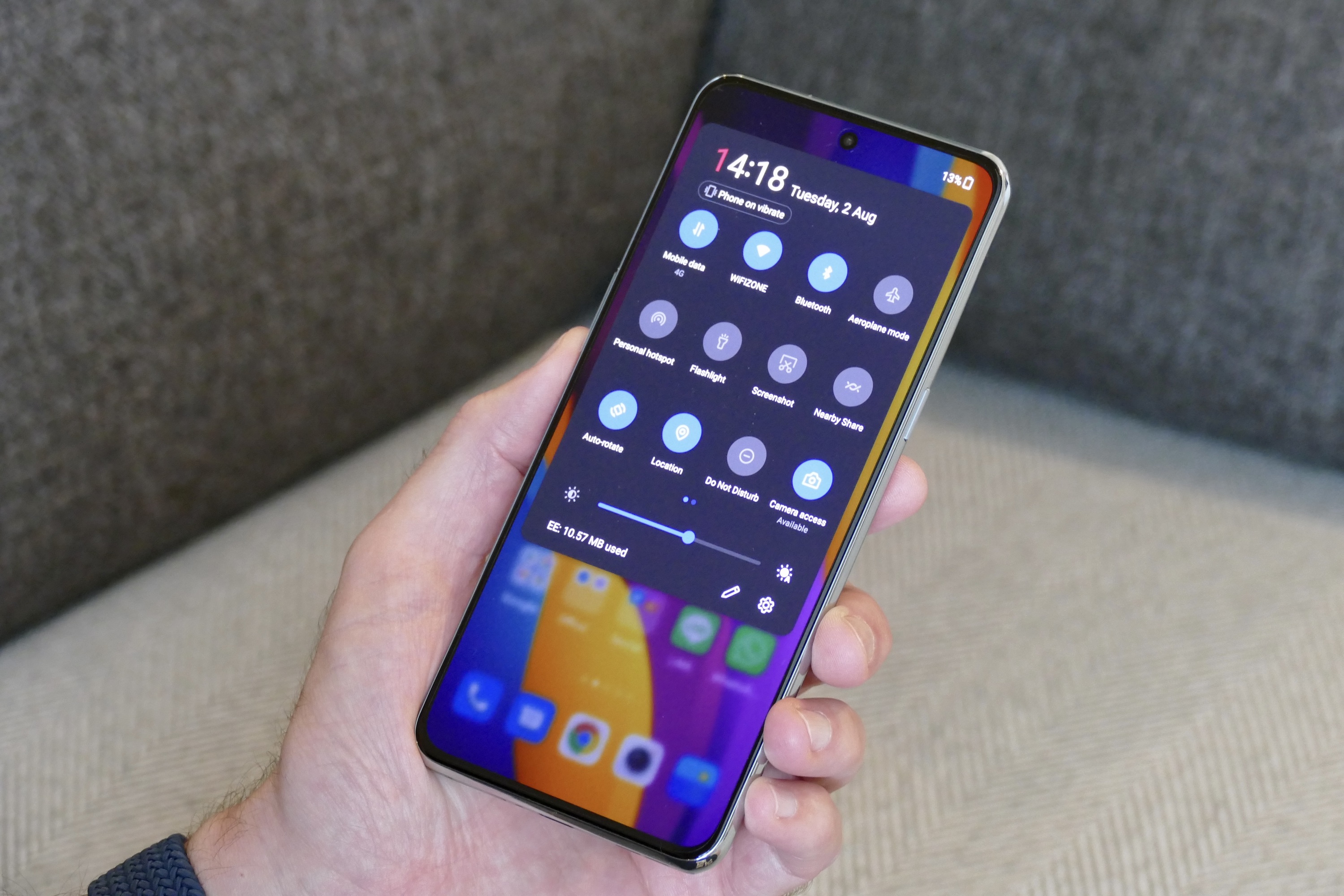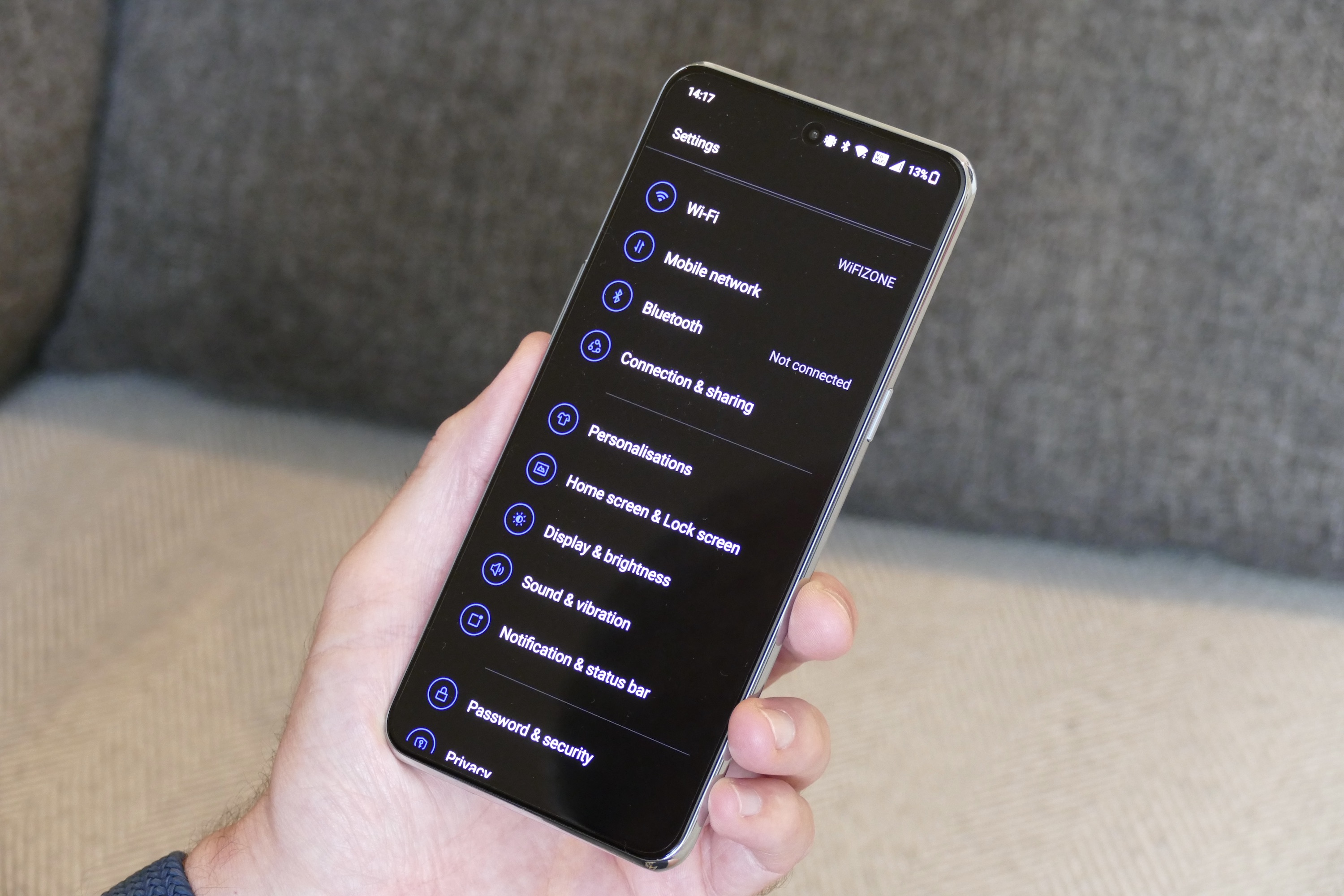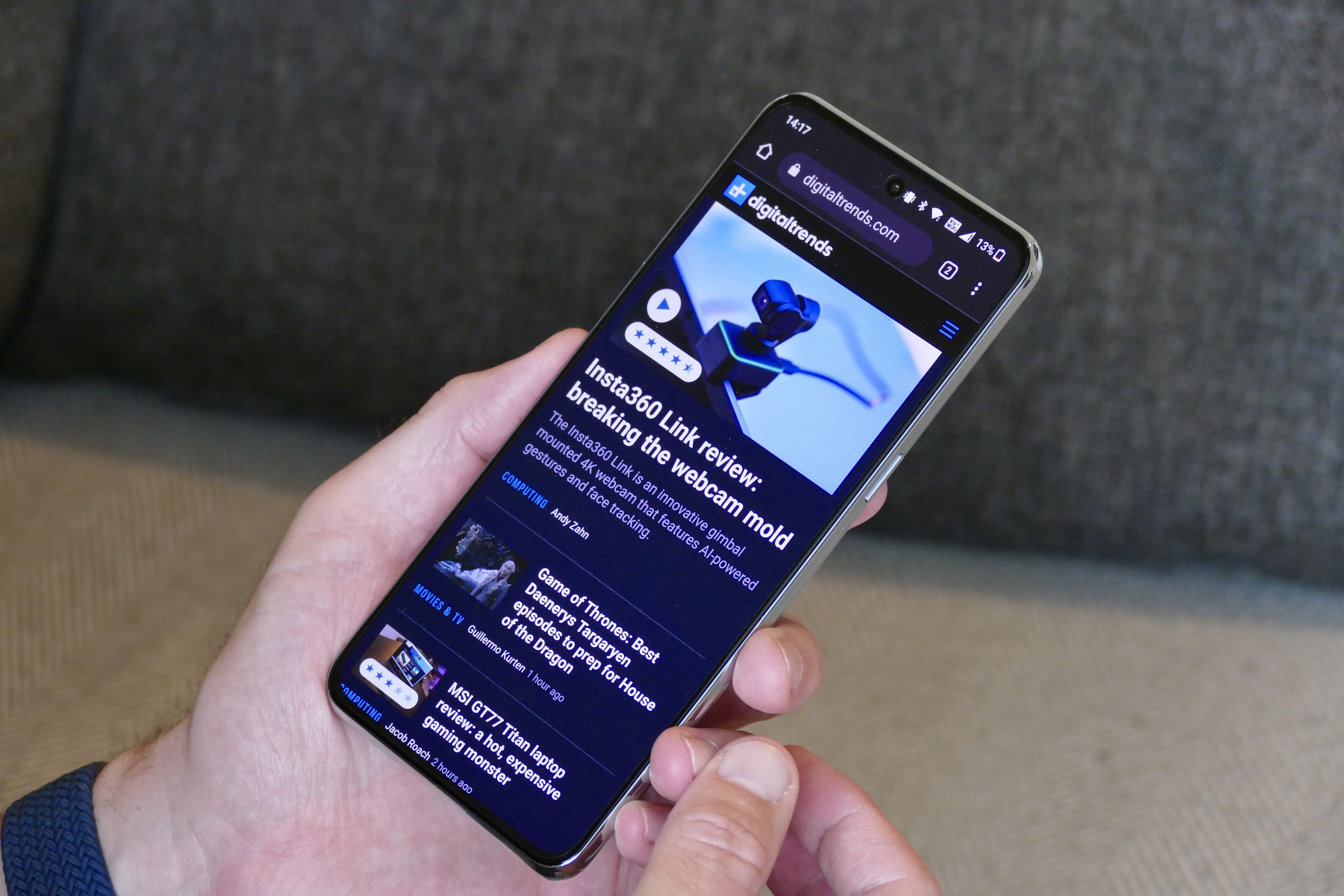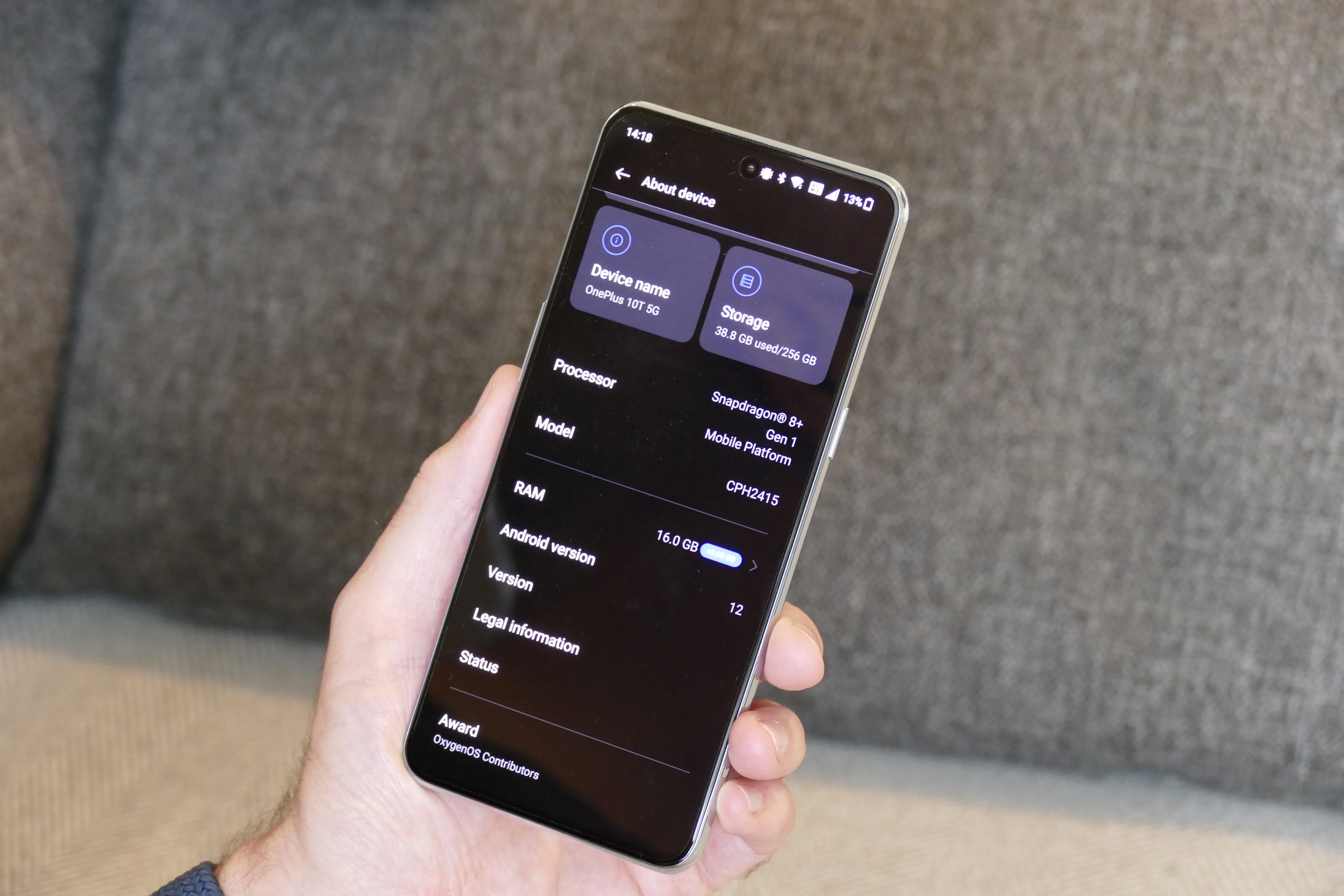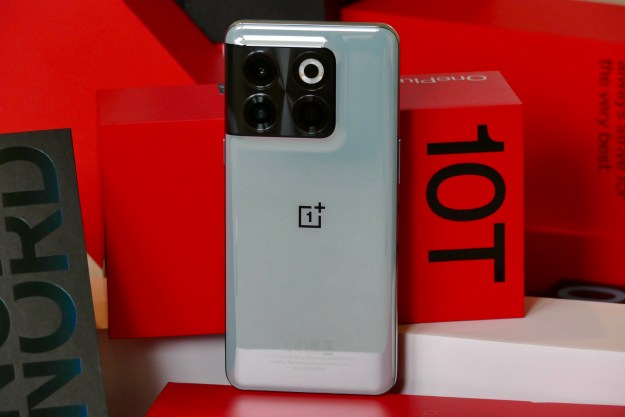
“The OnePlus 10T relies on the latest Qualcomm Snapdragon processor and very fast wired charging to attract attention, but the rest of the phone disappoints, and fails to compete wth both more expensive and cheaper alternatives.”
- Latest Snapdragon 8+ Gen 1 processor
- 20 minutes to charge the battery
- Plastic chassis
- No alert slider
- No wireless charging
OnePlus says it “never settles,” and the T-versions of its old phones proved it! OnePlus T devices would update an existing OnePlus phone with new technology after about six months to make sure it provided the best possible value. The OnePlus 10T follows this basic formula, but don’t mistake it for an upgraded OnePlus 10 Pro. It’s definitely not — and is in almost all other ways a marked step down from the 10 Pro.
Design
The OnePlus 10T is less of a 10 series and more a Nord series smartphone. By which I mean, do not buy it expecting to get the full premium experience you get with the OnePlus 10 Pro, and instead bank on something similar to a high-class mid-range model that could top the Nord line. While it has glass on the back, the chassis is made of plastic — and that’s a big problem.
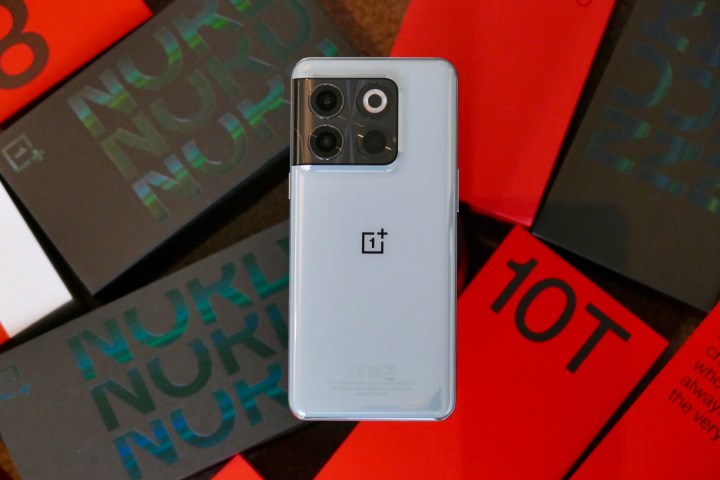
When you hold the OnePlus 10T, the one constant touch point is the frame. And that frame has that borderline unpleasant warm plasticky feel you get with the Nord 2T. It’s somewhat forgivable on the Nord because it’s a cheap phone, but at nearly twice the Nord’s price, it’s a much bigger issue for the OnePlus 10T. It’s not a good start.
OnePlus will point to the glass back and the integrated camera module as evidence this is a premium phone, but even that doesn’t have the same quality finish as the OnePlus 10 Pro. The glass on the green model has an oddly plastic feel and gets covered in smudges. The black model is also glass, but it has an unusual, and not always very pleasing, texture to it. It’s not an ugly phone, though. The integrated camera module carried over from the 10 Pro still looks interesting, and the green color is eye-catching without being gaudy.
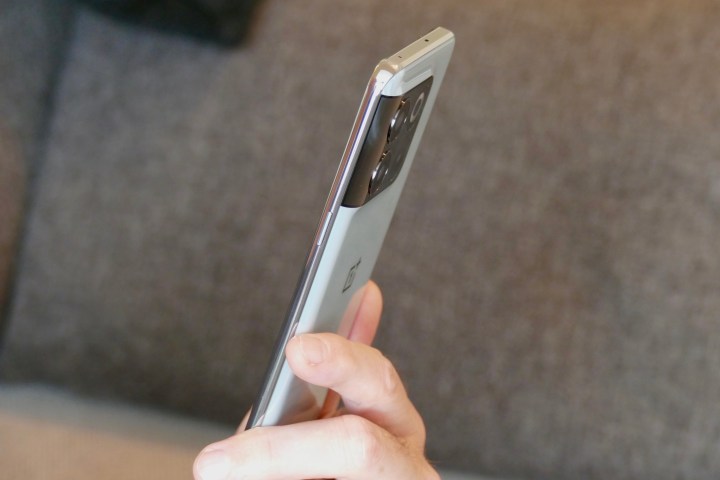
Surprisingly, OnePlus has taken the decision to remove the alert slider from the 10T, and its absence hurts. Not only is it very useful on the 10 Pro and all other primary OnePlus phones since the OnePlus One, but it makes these phones uniquely OnePlus. Only the Nord OnePlus phones have ignored the alert slider, presumably to cut costs, making its disappearance on the 10T bizarre and misjudged. According to OnePlus, it wouldn’t fit inside the phone due to changes to the antenna system — at least without making the phone thicker.
The 10T’s haptic engine is also disappointing. By default, the system-wide vibrations are turned off, but, turn them on, and the noisy buzzes generated make the phone sound a little hollow. The OnePlus 10 Pro’s wonderful haptic engine feels completely different, far more tactile and pleasing. Plus, it’s fully active right out of the box. It’s another corner cut for the 10T, as is the fingerprint sensor, which is set quite low in the screen. It’s fast and reliable, but the placement is more awkward than its implementation on the 10 Pro.
The OnePlus 10T isn’t ugly, it’s not that heavy, it’s comfortable enough to hold, and it looks pretty in green. However, the plastic chassis makes it feel cheap (which it’s not), the glass gets very smudgy, the haptics don’t reflect the company’s best efforts, the fingerprint sensor is too low on the screen (again), and the lack of the alert slider robs it of almost all remaining OnePlus-ness.
Performance
OnePlus calls the 10T its performance flagship phone, while the 10 Pro is its camera flagship. Backing this up is a switch from the Qualcomm Snapdragon 8 Gen 1 in the 10 Pro to the Snapdragon 8+ Gen 1 processor in the 10T. The Snapdragon 8+ Gen 1 is a superb processor, and it has really impressed with its ability in the Asus ROG Phone 6 Pro and Zenfone 9. Qualcomm claims an increase in performance and efficiency over the 8 Gen 1. When you don’t push the 10T, it does appear to be less power-hungry than the 8 Gen 1, suggesting it manages apps and background activity very well.
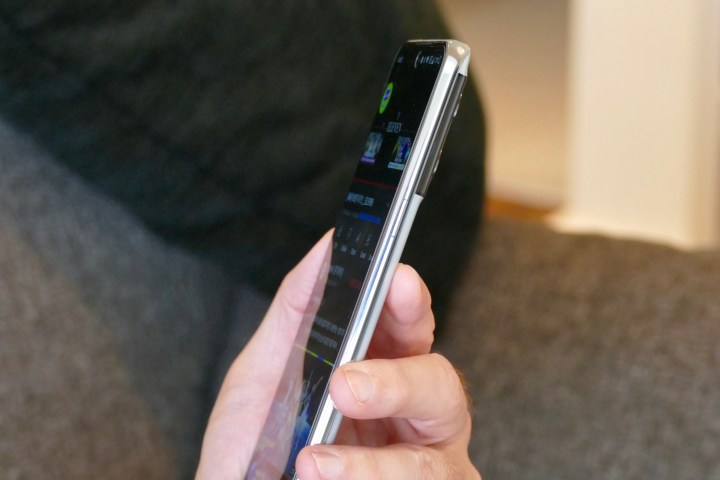
You can buy the OnePlus 10T with up to 16GB of RAM, too, the first time Oppo has offered such a massive amount of memory, which makes the phone capable of running more than 30 apps in the background at the same time. Combine this with the massive power of the Snapdragon processor, and the 10T is a multi-tasking monster. I haven’t manually closed any apps on the 10T since I started reviewing it, and there have been no noticeable speed issues when reopening them.
There’s no question about its gaming prowess either, with Asphalt 9: Legends and Diablo Immortal looking superb and providing masses of speed and smooth performance. The back of the phone, particularly around the camera module gets moderately warm when you play games like these for 30 minutes or more, but it’s never too hot to touch. There is a huge amount of performance potential in the OnePlus 10T.
All that said, the Snapdragon 8 Gen 1 isn’t exactly ancient and ponderous. In reality, the small benefits provided by the Snapdragon 8+ Gen 1 don’t really outweigh the compromises in design and materials on the 10T over the 10 Pro.
Camera
Hasselblad has not been involved with the OnePlus 10T’s camera system, so there’s no Hasselblad branding on the back and no Hasselblad tuning inside either. You get a Sony IMX766 50-megapixel main camera and an 8MP wide-angle camera, plus an almost entirely pointless 2MP macro camera. It’s a 16MP selfie camera in the central hole-punch cutout in the screen.

OnePlus is right — this isn’t a flagship camera phone. It takes photos just like Nord phones, and various Realme and Oppo phones too, through an acceptable main camera and a disappointing wide-angle camera. Shoot with the AI Mode’s scene recognition active and expect very bright and vivid colors, amped up beyond what’s natural. The 50MP camera works well on sunny, bright days, but is far less happy when lighting is difficult, and it doesn’t expose detail in shadows well at all.
The 8MP wide-angle camera doesn’t have the resolution to capture much detail, photos can appear washed out, and when it’s faced with colorful scenes it has an odd tone that ruins images. The camera can be unreliable when shooting up close, as it sometimes captures a really good photo, but at other times refuses to focus on the subject at all. Portrait mode impresses and edge recognition is highly accurate. We noted the same with the OnePlus Nord 2T in a recent camera comparison, but don’t be too surprised as the 10T and Nord 2T share the same main and wide-angle cameras, but not the same price.
There’s no optical zoom feature, but the camera app provides a shortcut to a 2x digital zoom mode, which isn’t as disappointing as you may fear. Selfies are decent too, with good skin tone and an accurate portrait mode. The OnePlus 10T’s camera system takes good photos in good conditions, but lacks sparkle and accuracy, and doesn’t have any special features at all. It won’t appeal to those who want to do more than just share an image on social media.
Screen and audio
The OnePlus 10T’s 6.7-inch screen is the same size as the OnePlus 10 Pro’s, but the specification is lower. It’s not an LTPO 2.0 AMOLED but a Fluid AMOLED panel, which means it may not return the promised efficiency benefits of the 10 Pro’s screen, which can adjust from 1Hz to 120Hz. Instead, the 10T switches between 60Hz, 90Hz, and 120Hz depending on your activities. The resolution is lower at 2412 x 1080 pixels, but it does still display a billion colors, supports HDR10+, and has a maximum brightness of 1,000 nits.
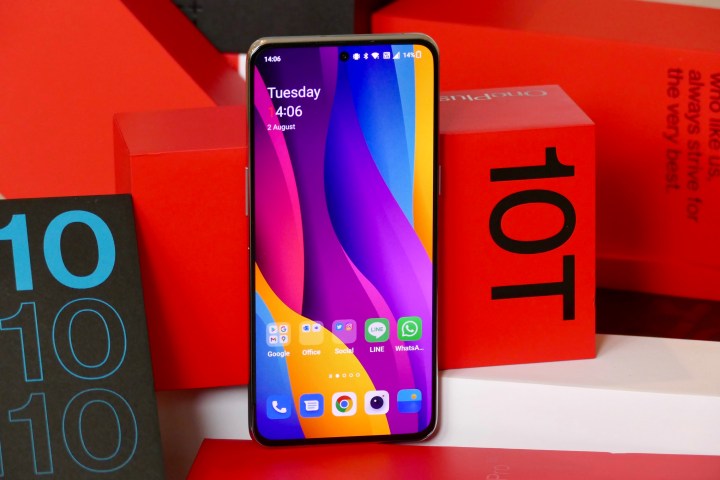
You probably won’t notice the difference in resolution during day-to-day use, but the cooler tone and lack of vibrance are far more problematic when you put it next to the OnePlus 10 Pro, where watching video is more exciting and enjoyable. The flat screen design introduces more reflections when you use it outside, where the viewing angles aren’t as wide either. The screen is just about bright enough for sunny days, but expect the adaptive brightness to frustrate as it constantly turns the brightness down, presumably as part of the phone’s unending quest to save battery power.
Speaker performance is good, and it sounds very similar to the OnePlus 10 Pro, but Bluetooth audio has taken a step back as the phone does not support AptX Adaptive like the 10 Pro. You’ll have to make do with AptX HD as the highest quality wireless audio standard, which will probably be fine for most people, but the downgrade goes against the “performance” angle OnePlus is pushing with the 10T. I haven’t experienced any problems with calls, or with 4G, 5G, or Wi-Fi connectivity, and all works as you’d expect.
Software
Like the OnePlus 10 Pro, the 10T uses OxygenOS 12 built over Android 12 — and the experience is identical, warts and all. On the plus side, I haven’t had any problems with apps, and it’s never slow in any way. However, there are a few bad parts. Notifications are spotty. For example, when new notifications arrive, the always-on screen preview usually shows old messages, and dismissing them from the lock screen is often impossible.
It’s very closely related to Oppo’s ColorOS software, and therefore is obsessed with system notifications (everything from the battery status to pinning messages clutters up the notification shade) and deep customization. The ability to change the way OxygenOS looks and operates is fine, but the default settings are biased towards saving battery, so helpful features like the always-on screen are disabled by default. The software isn’t unpleasant to use, but it never feels welcoming or well-designed and needs time and patience to get it right for you.
OxygenOS 12 rarely misses out on an opportunity to annoy either. When transferring photos from the phone to my computer using a USB Type-C cable for this review, the 10T refused to show the option to switch from charge mode to data transfer. Normally, the little pop-up menu in OxygenOS and ColorOS is one of the highlights of the software, as it’s very clear what it does. On the 10T, I had to activate Developer Mode and force it to transfer data, which is hardly the most user-friendly solution, as the system search wouldn’t show any relevant results in my efforts to prompt the menu to appear. I’m using the phone ahead of release, but have never encountered this with any OnePlus, Oppo, or Realme phone before.
The software isn’t unpleasant to use, but it never feels welcoming or well-designed.
The trouble with OxygenOS is it’s competing with Google’s excellent Pixel software, Asus’s ZenUI, and Nothing’s NothingOS — all of which prioritize simplicity, speed, and neat design over superfluous apps, irritating customizations, and unnecessary modes. Samsung’s OneUI is similarly complicated but manages to frustrate less by having well-judged default settings and a super visual design. Of all the smartphone software I use regularly, OxygenOS, ColorOS, and RealmeOS — all of these are basically the same — are the ones I look forward to living with least of all.
Battery
A 4,800mAh dual-cell battery lives inside the OnePlus 10T, and it comes with 150W wired fast charging by using the included SuperVOOC charging block and USB Type-C cable. Use the phone normally — with general app and social networking use, emails, the camera, and perhaps a short gaming session — and you’ll get a day-and-a-half between charges. Play intensive, high-end games for about 30 minutes and expect the battery to fall by 10%. You’re unlikely to get two full days out of the 10T’s battery unless you decide not to touch the phone at all.
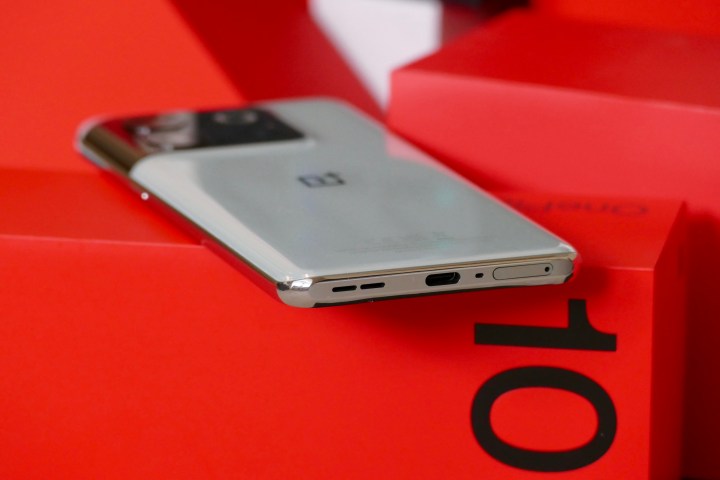
OnePlus’s pitch for the 10T is all about performance, and part of that is the super fast charging speeds. The 10T is just about the fastest charging phone available in the U.S., and even faster than the OnePlus 10 Pro. However, the OnePlus 10T’s charging is a little bit complicated. In the U.S., the OnePlus 10T charges at 125W and takes about 20 minutes to charge from almost flat to 100%. The phone supports 150W charging in the U.K., resulting in zero to 100% in 19 minutes, according to OnePlus.
The U.S. doesn’t get the full 150W charging speed due to the limitations of its AC power outlets, and at the time of writing we haven’t been able to test the full U.K. charging speeds due to an impending software update, but OnePlus says it’ll be available at launch. Adding to the confusion is the included power block is marked as a 160W unit, and that if you use a USB Power Delivery block it’ll charge the 10T at about 45W.
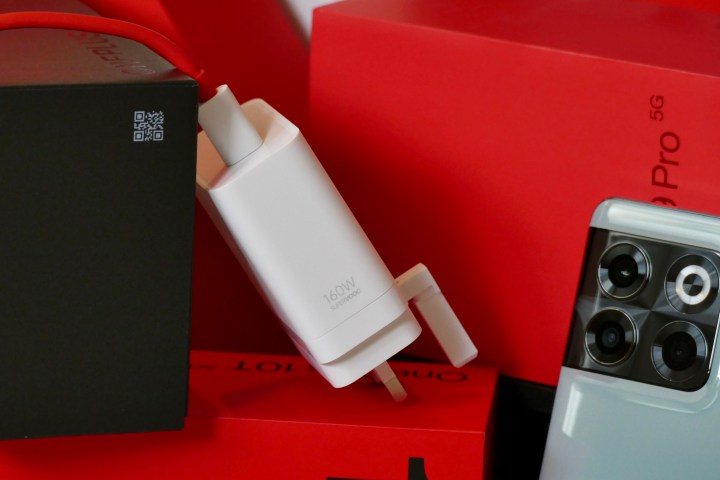
Twenty minutes of charge time is undeniably fast, and the benefits of doing so can be life-changing. But it only takes about 30 minutes to fully charge the OnePlus 10 Pro, so whether lives will be further changed by shaving 10 minutes off that time with the 10T may depend on how hectic your lifestyle is.
I’ve also had some issues with the “intelligent” charging system, which I haven’t experienced on the OnePlus 10 Pro. At this stage, the OnePlus 10T hasn’t been very good at predicting my use patterns, resulting in a partially charged battery if left on charge overnight. This may improve over time, but it hasn’t yet. Perhaps more disappointing is the lack of wireless charging, a feature found on phones that cost half of the 10T, and almost all flagship phones.
Price and availability
The availability of the OnePlus 10T varies depending on where you live. In the U.S., it costs $649 for the 8GB/128GB model and $749 for the 16GB/256GB model and will be available for pre-order on September 1, then on sale on September 29.
In the U.K., you can get the phone a month earlier, as pre-orders open on August 3 and will be ready for an August 25 final release. The 8GB/128GB model costs 629 British pounds and the 16GB/256GB version is 729 pounds.
Our take
What a strange smartphone the OnePlus 10T is. In a way, it’s an evolution of a phone that doesn’t exist because no one wanted it. And in another way, it’s like a Nord phone has escaped from its end of the factory, then accidentally been released without the right branding and at a laughably high price in several parts of the world.
The only real reason to consider buying the OnePlus 10T is the Snapdragon 8+ Gen 1 processor, but if that’s your main criteria, I’ll point you towards the Asus Zenfone 9 instead. It’s much better. Yes, the 10T’s fast charging is very fast, but it’s not drastically faster than the OnePlus 10 Pro, just like the Snapdragon 8+ Gen 1 isn’t that much faster than the 8 Gen 1.
There’s nothing really wrong with the OnePlus 10T. It works well enough, and to a certain extent, fits the OnePlus T series criteria. However, for not a lot more money you can get the 10 Pro which is made of higher quality materials, the screen is more attractive, the camera takes better photos, it has the alert slider, and those lovely haptics, too. Or, for quite a lot less money, you can get phones that miss out on the flagship chip but do everything else equally well or better. It puts the 10T in limbo, where it simply cannot be recommended.
Is there a better alternative?
Yes, loads. OnePlus has reduced the price of the OnePlus 10 Pro to $799 in the U.S., and if you’re committed to buying a OnePlus phone, we would recommend buying this instead of the 10T. The Google Pixel 6 is about to be replaced by the Pixel 7 but is still an excellent purchase, or you can just wait for the Pixel 7 itself. If you want to save a little money, the Pixel 6a is also recommended, and the Apple iPhone 13 should be considered too. All these phones have better cameras, similar or better screens, and more premium materials/designs — but miss out on the Snapdragon 8+ Gen 1 and the very fast charging. Instead, they offer better overall value.
If you’re set on owning a phone with the Snapdragon 8+ Gen 1, then take a look at the Asus Zenfone 9. It’s a more interesting, more premium, and better-equipped phone. If you want it for gaming, the Asus ROG Phone 6 Pro fits the bill perfectly. In the U.K., consider the Nothing Phone 1, which is cheaper but feels more expensive than the 10T. And while it doesn’t have the top Qualcomm chip, the camera and screen are equal to — or a little better than — the 10T. Also, take a look at the Realme GT 2 Pro, which is closely related to the 10T, but the camera has more interesting features and better performance.
If you really want a phone that’s just like the OnePlus 10T, buy the OnePlus Nord 2T. Instead of 629 pounds in the U.K., it costs 369 pounds. The battery charges in 25 minutes, it has basically the same camera, the same software, a 90Hz flat screen, a glass back and plastic chassis, and doesn’t have the alert slider either. Sure, it’s a MediaTek Dimensity 1300 chip and not the Snapdragon 8+ Gen 1, but it’s a lot cheaper.
How long will it last?
OnePlus will deliver three years of major Android updates and four years of security updates, plus the phone will get Android 13 with OxygenOS 13 before the end of 2022. The phone has an IP54 rating for basic water and dust resistance, protecting against rain and sweat, but not if you drop it in water or put it under the tap. The Snapdragon 8+ Gen 1 gives the phone plenty of longevity, so provided you don’t suddenly want to take better photos, three years before upgrading sounds reasonable.
Should you buy it?
No, buy a cheaper alternative or spend a little more to get the OnePlus 10 Pro.
